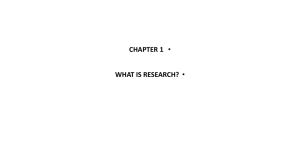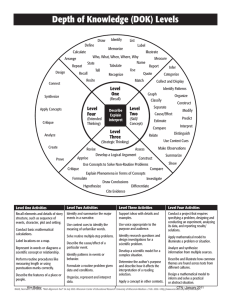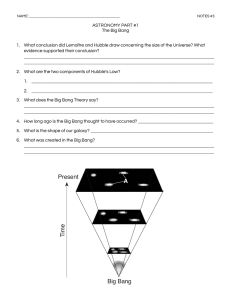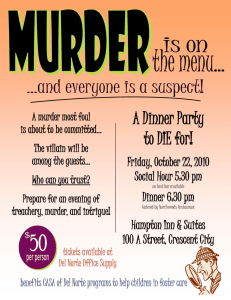Lecture 2 The Nature and Scope of the Historical Sciences
advertisement
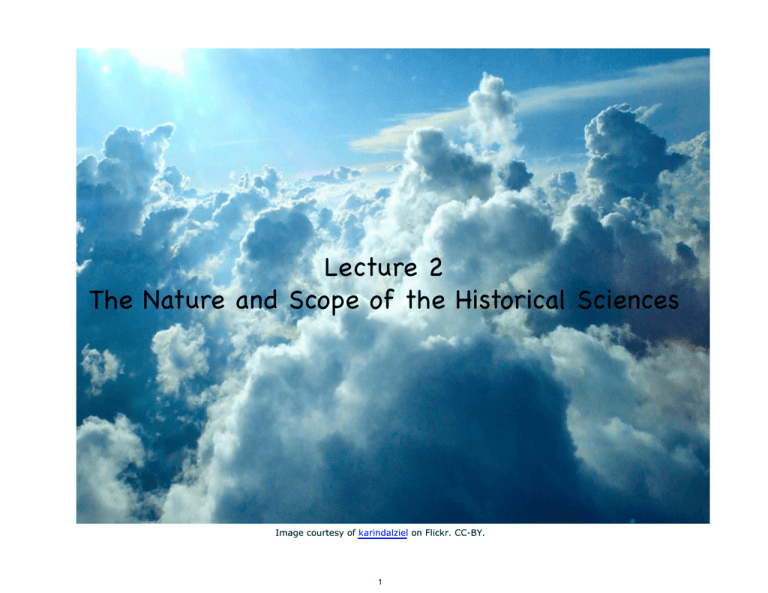
Lecture 2 The Nature and Scope of the Historical Sciences Image courtesy of karindalziel on Flickr. CC-BY. 1 Puzzle for Today: What do all these subjects have in common? Archeology…Biological Anthropology, Cosmology…Evolutionary biology…Forensic science…Paleontology…Philology…?? 2 Answer (of course!) They’re historical sciences; that is, they’re sciences concerned with the unrecoverable past… 3 Today, a tale in two parts Part 1: Doing science about the unrecoverable past;? or, why evolution is serious science? Part 2: Telling stories about the unrecoverable past;? or, why evolution is more than just serious science? 4 Tale 1: Historical science • Historical science attempts to construct convincing, empirically grounded narrative explanations of specific events in the past • Historical sciences ask questions such as: – Who murdered a young woman in Phoenix, Arizona in 1993? – Who built the pyramids, and how did they do it? – What happened in the very early history of the universe, moments after the Big Bang? 5 A distinction Experimental Sciences? • Deal with present • Deal with recoverable phenomena • Rely on eye-witness evidence • Possess distinctive (e.g., laboratory) methods Historical Sciences? • Deal with past • Deal with unrecoverable phenomena • Rely on circumstantial evidence • Possess distinctive (e.g., comparative) methods 6 Criticisms of Historical Science “Historical science does not benefit from the repeatable observations that have served as the cauldron of truth for scientific knowledge.” Institute for Creation Research (http:// www.icr.org/assumptions/) 7 Challenge: Can we be scientific about the unrecoverable past? Three case studies: • Forensic Science • Big Bang Cosmology • Paleontology 8 Case Study #1 Photo courtesy of pennstatelive on Flickr. CC-BY-NC. 9 Angiosperm witness for the prosecution “The murder of a young woman occurred in Phoenix, Arizona, and the finding of a pager at the scene of the crime led the police to a prime suspect in the case. He admitted picking up the victim, but claimed she had robbed him of his wallet and pager. The forensic squad examined the suspect's pickup truck and among the bits of evidence collected were pods later identified as the fruits of palo verde (Cercidium spp.). One detective went back to the murder scene and found several palo verde trees, one of which showed some damage that could have been caused by a vehicle….A preliminary study on samples from different trees from the murder scene and elsewhere quickly established that each palo verde tree was unique in its DNA pattern. It was then a simple matter to link the pods from the suspect's truck to the damaged tree at the murder scene and obtain a conviction.” WNED-TV (PBS - Buffalo, N.Y.), January 19, 1994 10 And the moral of case #1 is… It’s possible to obtain scientific evidence about an unrecoverable historical event that’s good enough to persuade a jury to convict someone of murder.? 11 #2: Large Hadron Collider Photo courtesy of Image Editor on Flickr. CC-BY. 12 Re-creating the Big Bang “At the earliest moments of the Big Bang, the Universe consisted of a searingly hot soup of fundamental particles - quarks, leptons and the force carriers….The LHC will collide lead nuclei so that they release their constituent quarks in a fleeting 'Little Bang'. This will take us back to the time before these particles formed, re-creating the conditions early in the evolution of the universe, when quarks and gluons were free to mix without combining. The debris detected will provide important information about this very early state of matter.” Science and Technology Facilities Council (2008) "The Big Questions" page on "The Large Hadron Collider" website. Accessed September 18, 2008. 13 And the moral of case #2 is… Historical events may be unrecoverable (and unrepeatable), but scientific experiments designed to test hypotheses about what happened during such events are not.? 14 #3: Tiktaalik Photo courtesy of ubermoogle2006 on Flickr. 15 The “Fishapod” • In 2004, paleontologists Neil Shubin and Ted Daeschler found fossils of Tiktaalik, an important intermediate between fish and amphibia, on Ellesmere Island in the Canadian Arctic. • They’d gone there to test a specific prediction that well-exposed rocks of precisely this age (383 million yrs) would contain fossils of this kind of intermediate. • Edward B. Daeschler, Neil H. Shubin and Farish A. Jenkins, Jr (6 April 2006). “A Devonian tetrapod-like fish and the evolution of the tetrapod body plan”. Nature 440 (7085): 757-763. 16 Prediction and time • In everyday speech, “prediction” often refers to the future. • In science, “prediction” often refers to “if/then” hypotheses that are independent of time • Sometimes people use the term “retrodiction” to refer to predictions that relate to past events. 17 A criticism refuted, a distinction re-visited Contrary to the claim made by the Institute for Creation Research, we’ve found that historical science CAN AND DOES benefit from “the repeatable observations that have served as the cauldron of truth for scientific knowledge.”? 18 A criticism refuted, a distinction re-visited • Historical science is no less rigorous, and no less subject to crucial test, than experimental science.? • The key point is that experimental science and historical science are directed towards different ends.? • NB: sometimes the two types of science work hand-in-hand on particular problems? 19 Tale 2: Evolution as origin story • Evolution isn’t merely historical science, it’s also a story about origins • Pretty much all cultures have origin stories • We need to understand the role that evolution has played as a (new) origin story in our culture 20 Origin stories are called myths Myths are stories – typically, regarded as “true” by the people who tell them – about how the world came to be in its current state. Among other things, myths often explain how the world came to be less than perfect.? 21 MIT OpenCourseWare http://ocw.mit.edu STS.009 Evolution and Society Spring 2012 For information about citing these materials or our Terms of Use, visit: http://ocw.mit.edu/terms.
